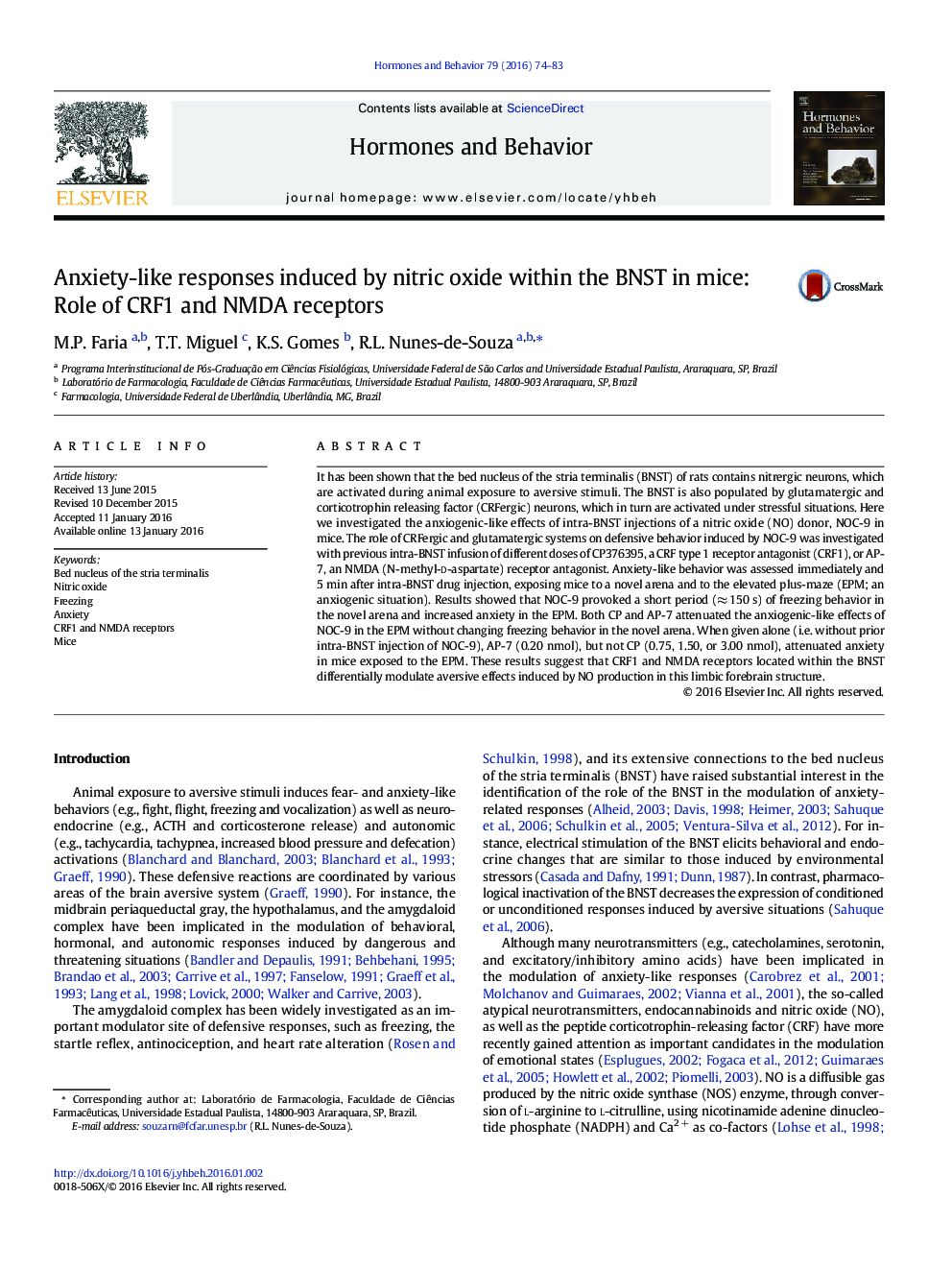| کد مقاله | کد نشریه | سال انتشار | مقاله انگلیسی | نسخه تمام متن |
|---|---|---|---|---|
| 323049 | 540475 | 2016 | 10 صفحه PDF | دانلود رایگان |
• Intra-BNST injection of nitric oxide donor induces freezing and anxiety in mice.
• Intra-BNST injection of NMDA receptor antagonist alone produces antianxiety effects.
• Blockade of CRF1 and NMDA receptors in the BNST reduces the NO-induced anxiety.
• Neither CRF (at CRF1) nor glutamate (at NMDA) prevents NO-induced freezing.
It has been shown that the bed nucleus of the stria terminalis (BNST) of rats contains nitrergic neurons, which are activated during animal exposure to aversive stimuli. The BNST is also populated by glutamatergic and corticotrophin releasing factor (CRFergic) neurons, which in turn are activated under stressful situations. Here we investigated the anxiogenic-like effects of intra-BNST injections of a nitric oxide (NO) donor, NOC-9 in mice. The role of CRFergic and glutamatergic systems on defensive behavior induced by NOC-9 was investigated with previous intra-BNST infusion of different doses of CP376395, a CRF type 1 receptor antagonist (CRF1), or AP-7, an NMDA (N-methyl-d-aspartate) receptor antagonist. Anxiety-like behavior was assessed immediately and 5 min after intra-BNST drug injection, exposing mice to a novel arena and to the elevated plus-maze (EPM; an anxiogenic situation). Results showed that NOC-9 provoked a short period (≈ 150 s) of freezing behavior in the novel arena and increased anxiety in the EPM. Both CP and AP-7 attenuated the anxiogenic-like effects of NOC-9 in the EPM without changing freezing behavior in the novel arena. When given alone (i.e. without prior intra-BNST injection of NOC-9), AP-7 (0.20 nmol), but not CP (0.75, 1.50, or 3.00 nmol), attenuated anxiety in mice exposed to the EPM. These results suggest that CRF1 and NMDA receptors located within the BNST differentially modulate aversive effects induced by NO production in this limbic forebrain structure.
Journal: Hormones and Behavior - Volume 79, March 2016, Pages 74–83
